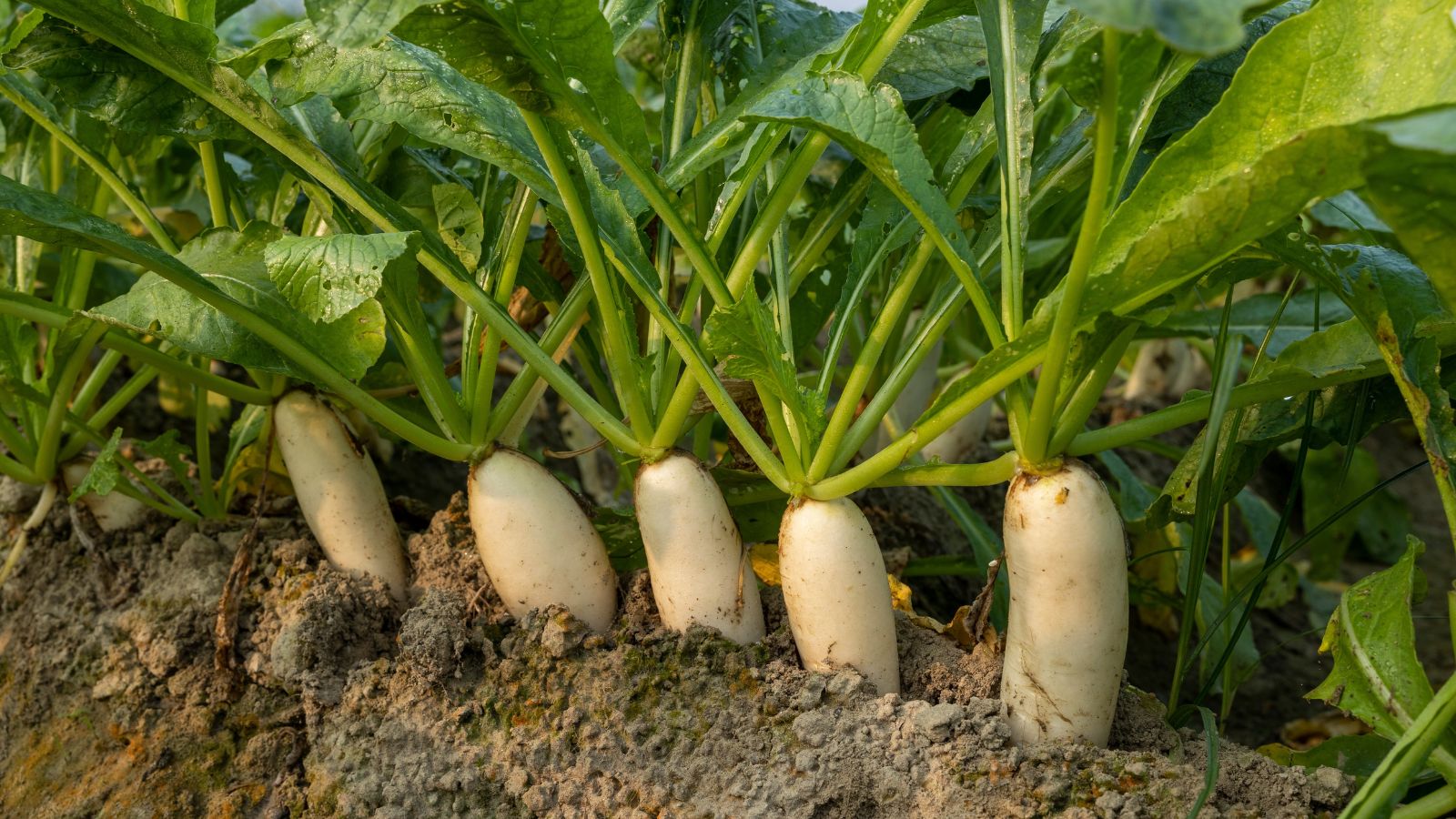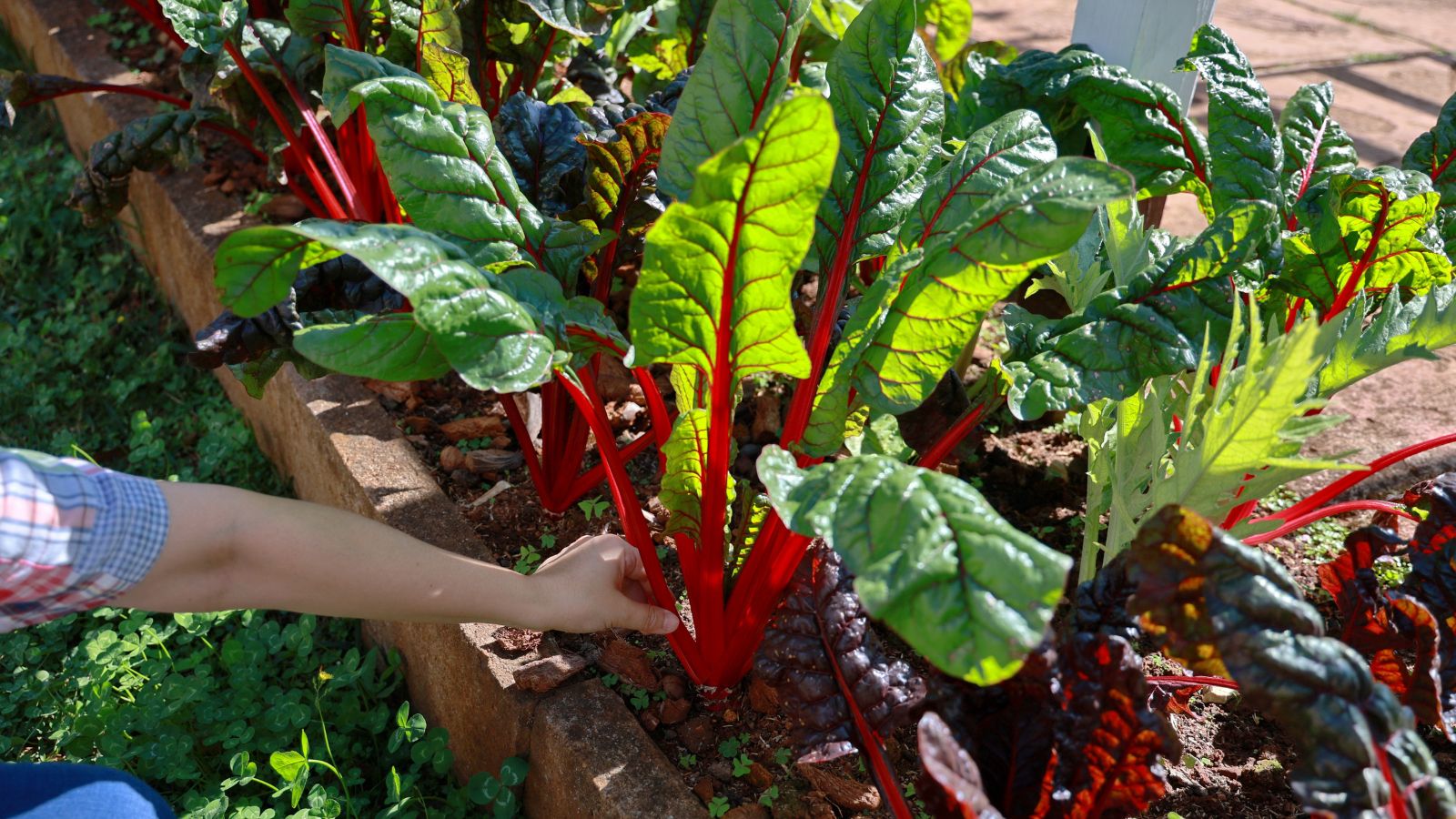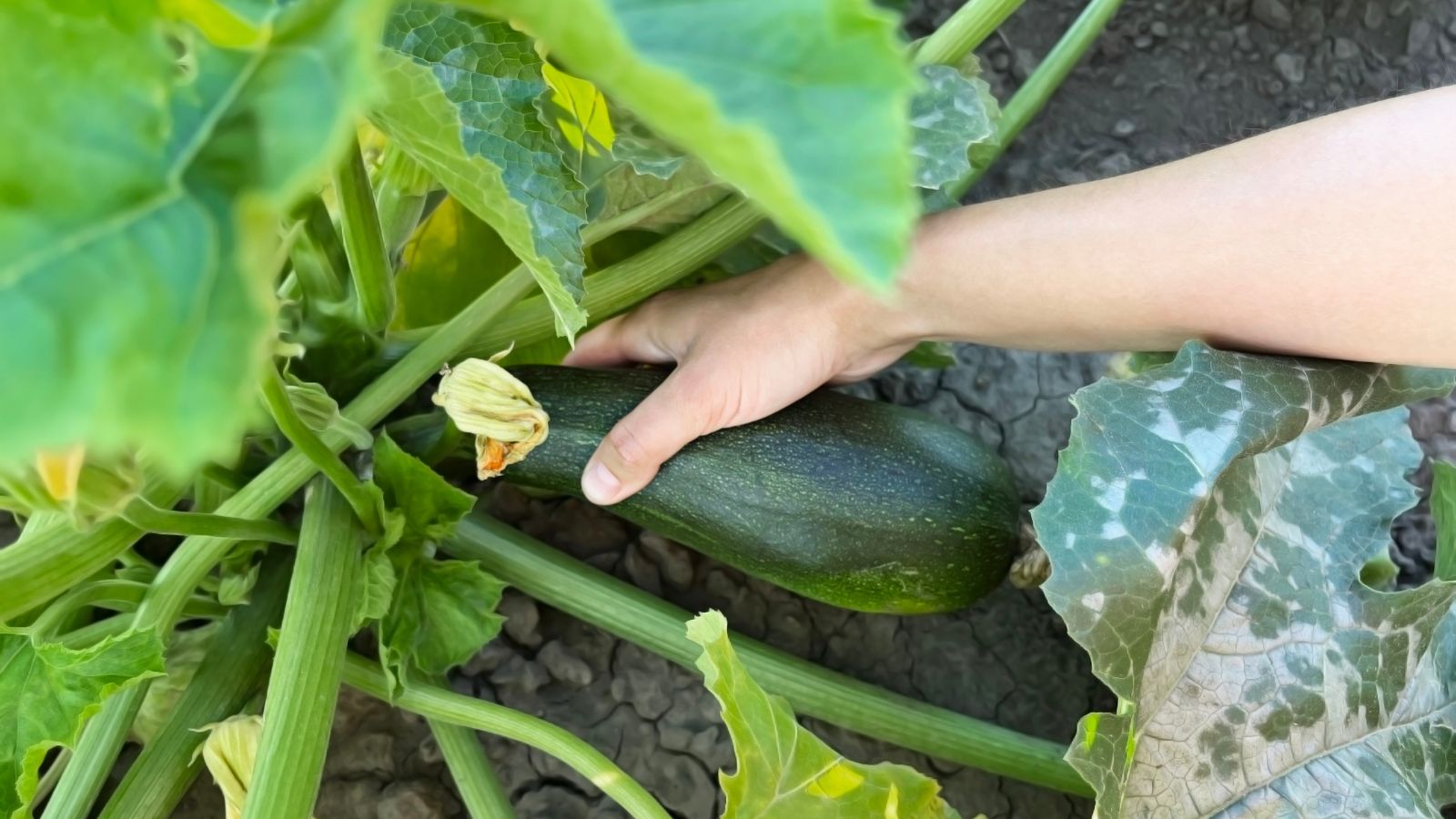It’s common knowledge that gardening is all about creating the perfect conditions for your plants to grow, especially when it comes to soil quality. This is particularly the case for vegetables, but believe it or not, there are exceptions. In fact, some plants will still thrive even in poor soil conditions, so here is a list of some notable examples that you should be aware of.
Radishes

One of the best vegetables when you have poor soil conditions is the radish, which matures very quickly and just doesn’t need deep, rich soil. Actually, they develop best in loose, well-drained areas, particularly in sandy or silty soils, which are often low in nutrients. Ultimately, this makes radishes perfect for early spring or late fall harvests, as well as for beginner gardeners.
Carrots

Next to your radishes, you could plant some carrots in your yard, as they can absolutely grow in less-than-ideal soil, especially if it’s somewhat sandy. Tougher, compacted soils may cause carrots to become misshapen, but they’ll still grow in these conditions–it’s just not ideal. Keep up with regular deep watering to help them stretch their roots, though, and they should find the nutrients they need to grow normally.
Kale

Another hardy vegetable that thrives in poor soils is kale, especially during the cooler months. It’s adaptable and only asks that the soil isn’t too waterlogged, making it pretty low-maintenance. Furthermore, kale’s ability to withstand frost also makes it a reliable option for vegetable patches where the soil may not be the best, adding resilience to your garden year-round.
Beets

If you’ve never tried to grow beets, you should change that–these vibrant root vegetables handle moderately poor soil well, especially if it’s slightly looser and well-drained. They’re also quite tolerant of lower nutrient levels, making them a good choice for gardens with less-than-perfect ground. Simply keep them watered regularly (but not too regularly), and this will help ensure a good crop. Don’t forget their leaves are edible, too!
Swiss Chard

Swiss chard is quite a resilient vegetable that can grow in pretty poor soil conditions. Sure, it will thrive even more with optimum fertility and regular watering, but it’s not exactly a fussy plant. Best of all, it can be harvested regularly throughout the season, making it a productive vegetable for those working with less fertile garden beds.
Turnips

Anyone who has grown turnips before will likely know that these vegetables are highly tolerant of less fertile soils. As with most vegetables on this list, they’ll still need regular watering, but they won’t demand rich soil to develop their tasty roots and greens. As a result, they’re a super reliable crop for gardeners who are having to deal with tougher patches of ground.
Potatoes

Perhaps the most popular vegetable on this list, the potato is beloved not only for its versatility in cooking but also for its ability to tolerate rocky or sandy soils. Yes, they prefer loamy, loose soil, but in general, they’re relatively adaptable and can still produce a hearty crop in poorer conditions. This is thanks to their deep roots, which allow them to access hidden nutrients, making them one of the hardier vegetables for challenging soil.
Zucchini

Not enough gardeners realize that zucchini is actually very easy to grow, even in poor-quality soils. They just need plenty of sunlight along with regular hydration, and they should still be productive. With that being said, though, they’ll definitely benefit more from a little extra fertility to really thrive.
Green Beans

Green beans are nitrogen-fixing plants, which means they can thrive in poorer soils while doing your veggie plot some good. Amazingly, they actually improve the soil for future crops, making green beans a double benefit to your garden. They don’t require much fertilizer, either, so they’re an all-round excellent choice for low-nutrient ground.
Peas

Just like any other vegetable, peas will always prefer richer soil, but uniquely, they can still manage a decent crop in unfavorable soil conditions. Thanks to their nitrogen-fixing ability, they help improve the soil for future plants, similar to green beans. Sadly, though, they may not yield as much in poor conditions, so it’s best to find the best soil possible for your peas.
Onions

Next on our list is onions, a relatively adaptable vegetable that can grow in a range of soil conditions. The key is ensuring that the soil is well-drained; any excess water isn’t necessary, as onions’ shallow roots make them able to access nutrients that other plants might miss. So, don’t let poor soil conditions get in the way of your onion patch because your yield will more than likely be just fine.
Garlic

In a similar reign to onions, garlic is impressive in its ability to thrive despite poor soil conditions. Once again, they’ll need to be well-drained, but otherwise, they’ll be relatively forgiving of less-than-ideal conditions. As a result, it’s an excellent choice for newbie gardeners looking for a dependable, easy-to-grow crop in challenging soil.
Lettuce

Believe it or not, lettuce can tolerate poor soil; it’s really not a demanding plant, making it a great choice for gardens with low-quality soil where other crops may struggle. To maximize its chances of thriving, add the occasional bit of compost or other nutrients, and don’t forget to water it regularly. Regardless, though, you’ll probably be impressed with how well lettuce copes under stress.
Cabbage

If you’re looking to get more greens in your diet but are worried that your yard soil isn’t up to the task, consider growing cabbage. It’s resilient, can handle poor soils, and only really needs regular watering and sunlight to produce solid heads. So, don’t overthink it–just plant those seeds and give cabbage a go, and you’ll likely be pleasantly surprised.
Spinach

Another leafy green that will enrich both your diet and garden despite poor soil conditions is spinach, particularly during cooler seasons. Most first-time gardeners are amazed at how fast it can grow, even though it doesn’t demand much from its environment. As with any plant, it will certainly grow faster and stronger with regular watering, but don’t worry too much about the soil.
Parsnips

Parsnips prefer looser soil for best growth but can tolerate compact or stony conditions to some extent. However, their growth may be affected by very tough soil, so there’s a fine line. They’re still a good choice for less-than-perfect gardens, as they can push through compacted areas, but they may benefit more from occasional care.
Leeks

Another vegetable that can thrive in poor soil conditions is the humble leek. Water it regularly and put it in the best soil that you can, and you’ll likely be pleasantly surprised. This is because their shallow roots make them well-suited to low-nutrient areas, making leeks a reliable and flavorful addition to your vegetable patch. However, it does mean that their ability to draw water is lower, so we can’t emphasize the importance of regularly watering them enough.
Chicory

Last but not least is chicory, a vegetable that is very well-suited to poor soil conditions, thanks to its deep roots that can access nutrients other vegetables can’t reach. It’s a low-maintenance crop that will keep growing even when other plants struggle, so what are you waiting for? Chicory is a fantastic option for gardens with challenging soil, so stop thinking about it and start growing it.
